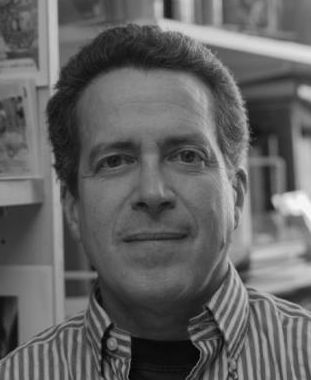New Approaches to American Jews and Movie Making During WWII
 On Monday, November 7th, Dr. Michael Berkowitz gave a lecture in the Great Hall of the Wren Building on “New Approaches to American Jews and Moviemaking during WWII”. Dr. Berkowitz particularly discussed the role of Leo Rosten and his position as head of the motion picture division of the U.S. Office of Facts and Figures. In 1939, there was a need for “film people” in America, Canada and the U.K. to make training films for the armed forces and (in America specifically) to educate Americans on what was occurring in Europe. One of the products of this enterprise was the film “A Prelude to War”, which was screened for President Roosevelt in order for him to decide whether to restrict its consumption to the armed forces or to put it in the mainstream cinemas. FDR watched this film in the company of Harry Hopkins, Alexander Woollcott and Harpo Marx: advisers on this matter. However, Marx’s autobiography neglects to mention this meeting; neither is there any record of the conversation of the four men. Why might this be? Dr. Berkowitz asserts that American antisemitism was so rampant that for Marx to publicize his having the president’s ear might be disastrous.
On Monday, November 7th, Dr. Michael Berkowitz gave a lecture in the Great Hall of the Wren Building on “New Approaches to American Jews and Moviemaking during WWII”. Dr. Berkowitz particularly discussed the role of Leo Rosten and his position as head of the motion picture division of the U.S. Office of Facts and Figures. In 1939, there was a need for “film people” in America, Canada and the U.K. to make training films for the armed forces and (in America specifically) to educate Americans on what was occurring in Europe. One of the products of this enterprise was the film “A Prelude to War”, which was screened for President Roosevelt in order for him to decide whether to restrict its consumption to the armed forces or to put it in the mainstream cinemas. FDR watched this film in the company of Harry Hopkins, Alexander Woollcott and Harpo Marx: advisers on this matter. However, Marx’s autobiography neglects to mention this meeting; neither is there any record of the conversation of the four men. Why might this be? Dr. Berkowitz asserts that American antisemitism was so rampant that for Marx to publicize his having the president’s ear might be disastrous.
Similarly, a lid was kept on the role of Anatole Litvak in the production of “A Prelude to War”. Isolationism and antisemitism in the U.S. Congress at the time was strong; isolationist senators from Oregon and Connecticut claimed that “A Prelude to War” was none other than personal propaganda being used by President Roosevelt to secure election to a fourth term. Had they known that Litvak, Jewish and a native of Russia, had been involved with production, their reactions might have been even more drastic. This thought process was widely employed by Leo Rosten during his time at the Office of Facts and Figures Motion Picture Division. He put a myriad of non-Jewish newspaper people (rather than film people) in high places in the American film industry, keeping the roles of Jews working in Hollywood under wraps to avoid antisemitic backlash from both elements of the government and of the public.
Rosten was also concerned, chiefly, with how to shape public opinion. He had gone to school with this in mind, but after graduating with his Ph.D. found it impossible to get a job due to that same pervasive American antisemitism. After writing scripts for some years, he applied for funding to run a serious academic study on Hollywood’s relationship with public opinion. It was this work that eventually led to his appointment to the Office of Facts and Figures, where he was concerned with the effort not to repeat the mistakes of the Wilson administration, which led to a backlash against the idea of propaganda in the film world. Rosten also learned from the U.K.’s wartime film programs; he made sure to use both 16mm and 35mm film so pictures should be shown in both educational and entertainment contexts, and he required a competent film technician to be on hand whenever films were being shown. Rosten’s efforts in the American wartime film sphere showed an incredible knowledge of the workings of public opinion; this, Dr. Berkowitz explains, was a major reason why he “hid” the enormous role held by Jewish filmmakers during the war years.
 Skip to main content
Skip to main content
